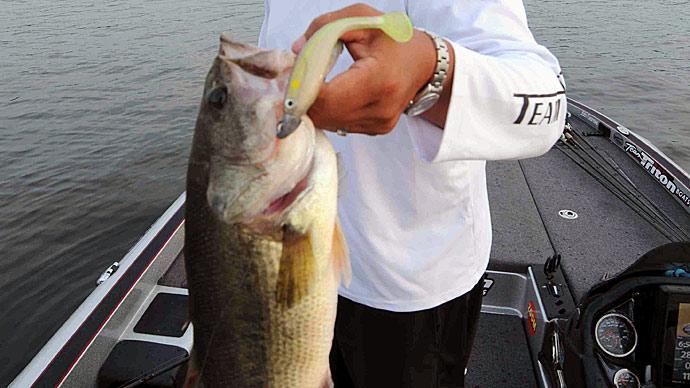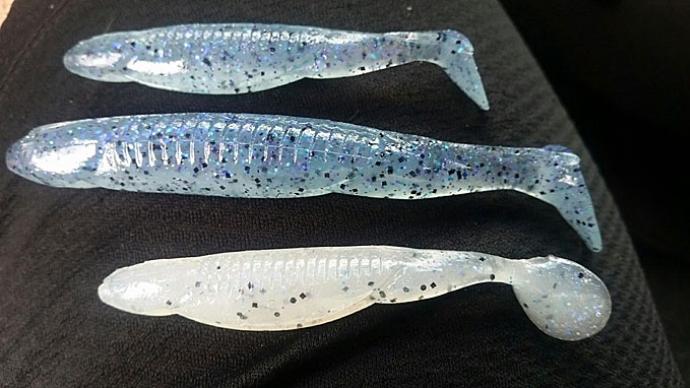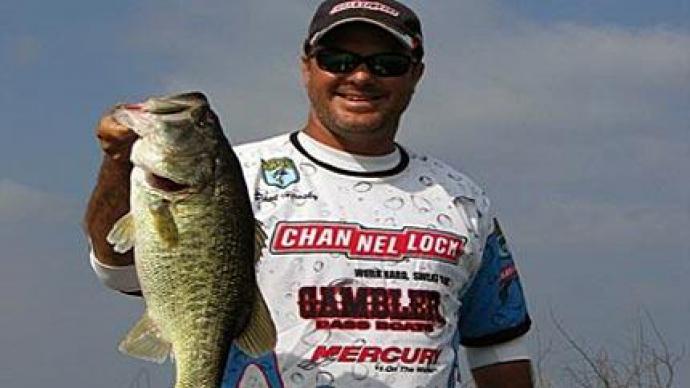
The term “swimbait fishing” often brings visions of giant trout imitating lures, beefy rods, large reels, and heavy line. That is how it started, after all, and those jumbo lures continue to catch trophy bass every year. But those big baits are not for everyone and may not work everywhere.
If those huge lures are not your style, rejoice because the swimbait evolution has continued, and now swimbaits come in a range of sizes, all the way down to bite-sized versions that can be fished on spinning tackle. These small swimbaits have proven themselves as consistent fish catchers when the situation is right.
Bass fishing pro Brian Latimer is a big fan of three or four-inch swimbaits and uses them every year when bass are feeding on small baitfish. For this article, he shares his approach to fishing small swimbaits, how he fishes them, and what gear works best for him.
When to Go Small
The term “match the hatch” is one of the most overused sayings in all fishing, but it remains true, especially when talking about lure size. When bass are focused on a small baitfish, that will appeal to them most, and they may ignore larger lures.
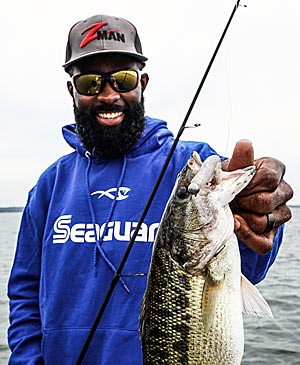
That is precisely how Latimer chooses when to go small. He starts throwing swimbaits anytime he notices small baitfish. “Around my house in South Carolina, it is normally a summer and fall technique when the threadfin shad are tiny. I like to use small swimbaits because you can cover water quickly in search of active fish. The bass also get conditioned to eating small baitfish, which can be difficult to catch on bigger lures,” he says.
The right time to use them will vary based on where you live and what the bass are eating, but when they are keyed in on small baitfish, it is hard to beat a small swimbait.
Where and How to Use Them
Humps, brush piles, and main lake points are all high-percentage areas for fishing small swimbaits, according to Latimer.
“I also focus on the mouths of creeks and steeper points. The flatter points do not congregate the baitfish as much,” he says. No matter where he is fishing, he doesn’t stay long before he moves on to the next area. “I like to keep moving. I’ll make 10-15 casts; if I don’t get a bite, I’m on to the next spot. Finding the most aggressive fish and moving until you find them.”
Latimer pays close attention to his electronics to search for fish activity. It is not only the bass he is looking for and will look for schools of baitfish on his Lowrance units. What he sees gives him important clues like how deep they are. Once he determines their depth, he will adjust his lure and jig head size accordingly.
One of the best things about fishing small swimbaits is how easy they are to fish. There is no significant learning curve to start, and anglers of all skill levels can pick them up and start catching fish. “I use a steady retrieve as I bring it back to me. I will let it fall to the depth the fish are before starting the retrieve, but it is just cast and reel it back,” says the South Carolina pro.
Swimbaits and Jig Heads
Countless small swimbaits are available to anglers and just as many different jig head models. Latimer keeps it simple and relies on two various swimbaits and simple round ball head jigheads. He prefers those with light wire hooks that match well with these small baits and sizes between 3/16 ounce and 3/8 ounce.
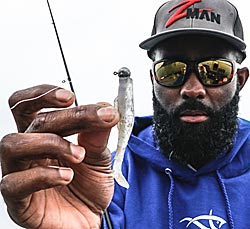
“If the fish are near the surface or in the top ten feet of the water column, I like the Z-Man DieZel MinnowZ. If they are deeper, I like the Slim SwimZ,” he shares. Both of these baits are available in the small sizes he prefers, but the slender profile of the Slim SwimZ is better suited for deeper water, according to Latimer. “The thinner profile allows it to get deeper faster, where the DieZel MinnowZ is a little bulkier, making it better for fishing up near the surface.” He will adjust his jighead size accordingly and go with the heavier ones for deeper fishing.
When it comes to swimbaits' colors, he matches his color based on the forage. Not surprisingly, shad patterns are about all he throws when fishing small swimbaits. “Z-Man has a color called Opening Night that is one of my favorites no matter where I go,” says Latimer.
Small Swimbait Gear
Due to the lightweight size of these baits, spinning tackle is Latimer’s preferred gear. “Some guys prefer to fish them on baitcasters, but I like the smooth drag and using lighter line, so I like to use spinning tackle,” he shares.
“I also like a longer rod for small swimbaits. The one I use is a 7’3” medium action,” he says. “It allows me to cast a little farther than a shorter rod. I pair it with a Size 30 Abu Garcia Revo Premier, and most of the time, I use straight fluorocarbon line.”
He prefers 8-pound Seaguar Tatsu or InvizX for this application but will switch to a 20-pound Seaguar Smackdown braid to an 8-pound fluorocarbon leader in some specific instances. “If I see a lot of schooling activity, I like the braid to fluorocarbon combination because you get better casts, and you can reach those schoolers far away from the boat.”
Fishing small swimbaits is one of the best ways to catch fish actively feeding on small baitfish. Most of the time, this applies to anglers targeting bass focused on shad, but the same general rules apply when bass eat other forage. If the bait is small, match the hatch and give them something they want to eat.
BassResource may receive a portion of revenues if you make a purchase using a link above.


